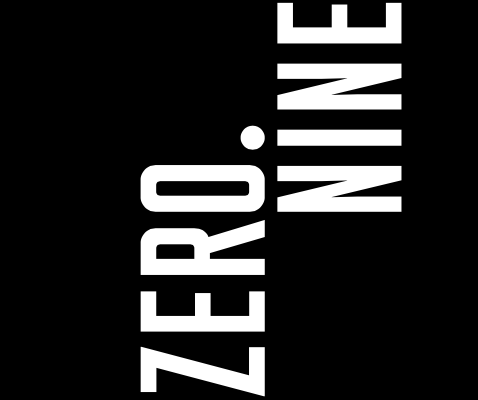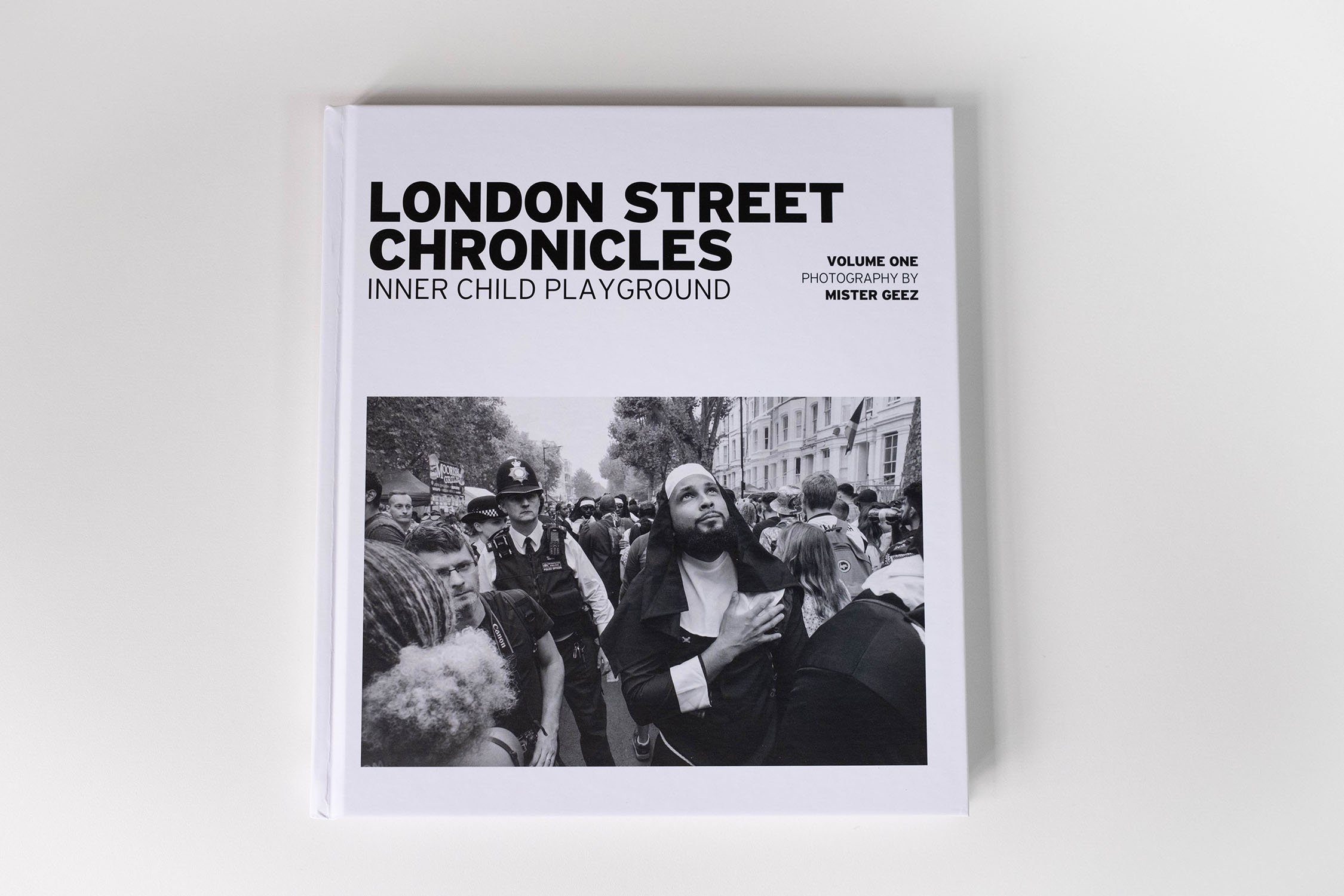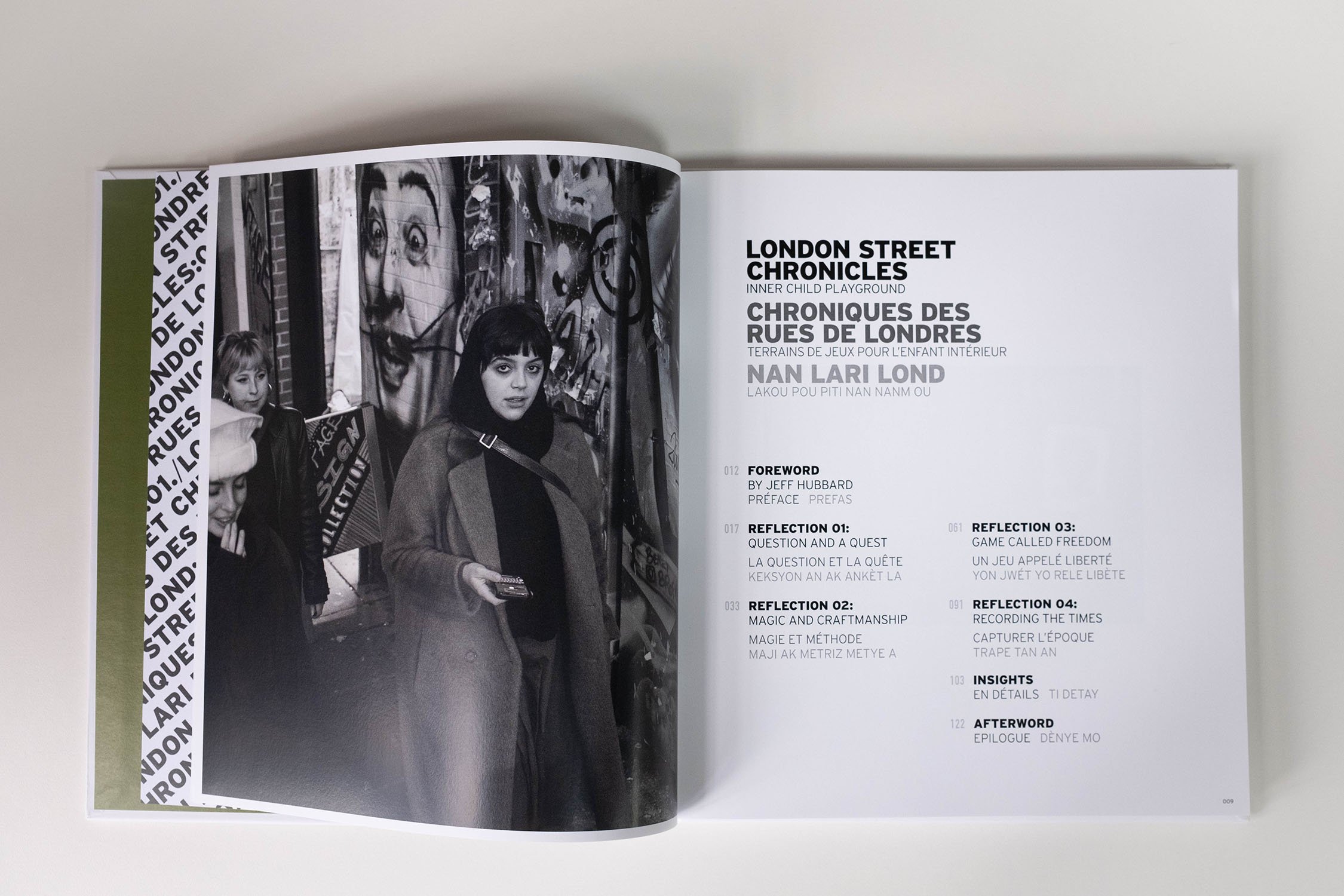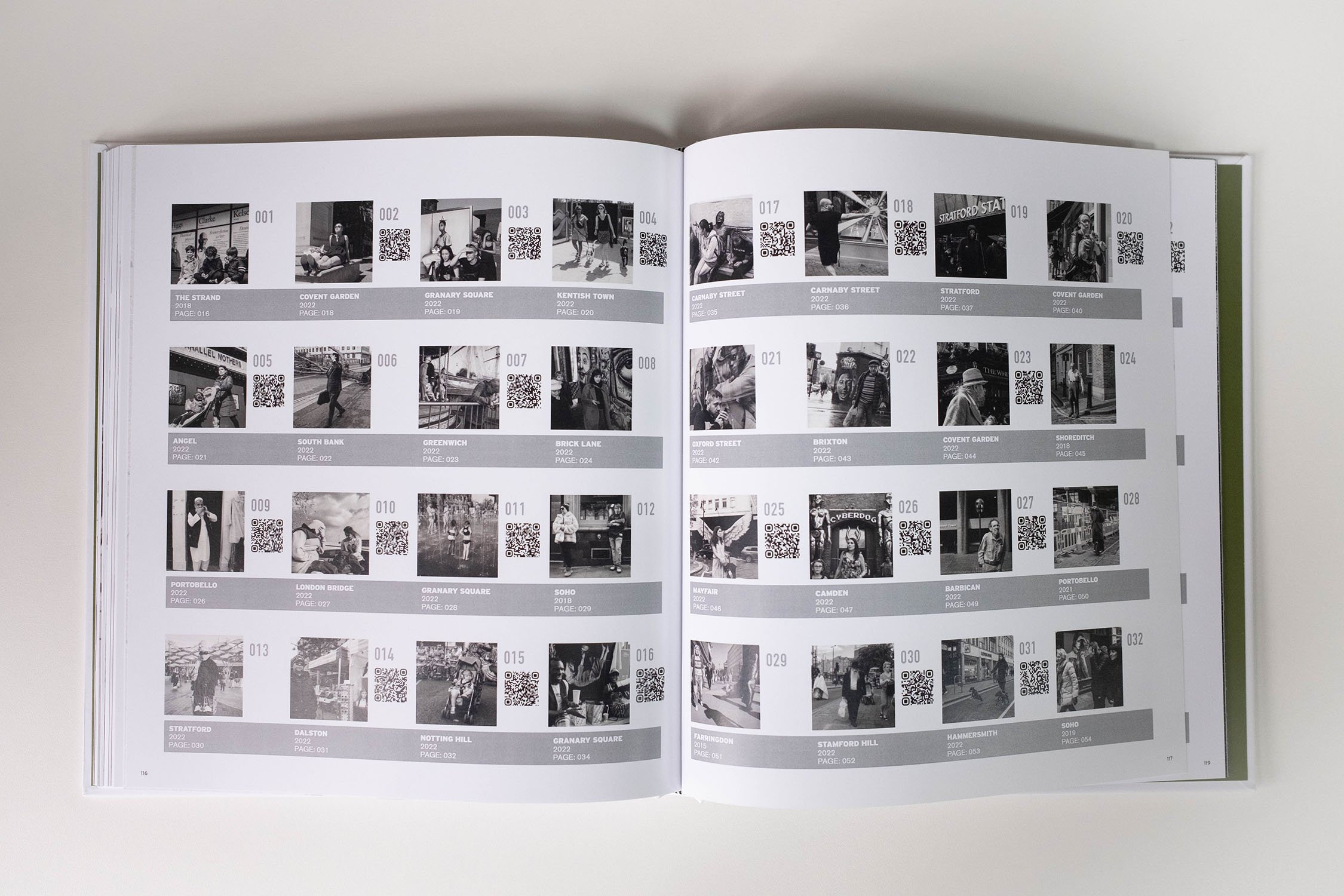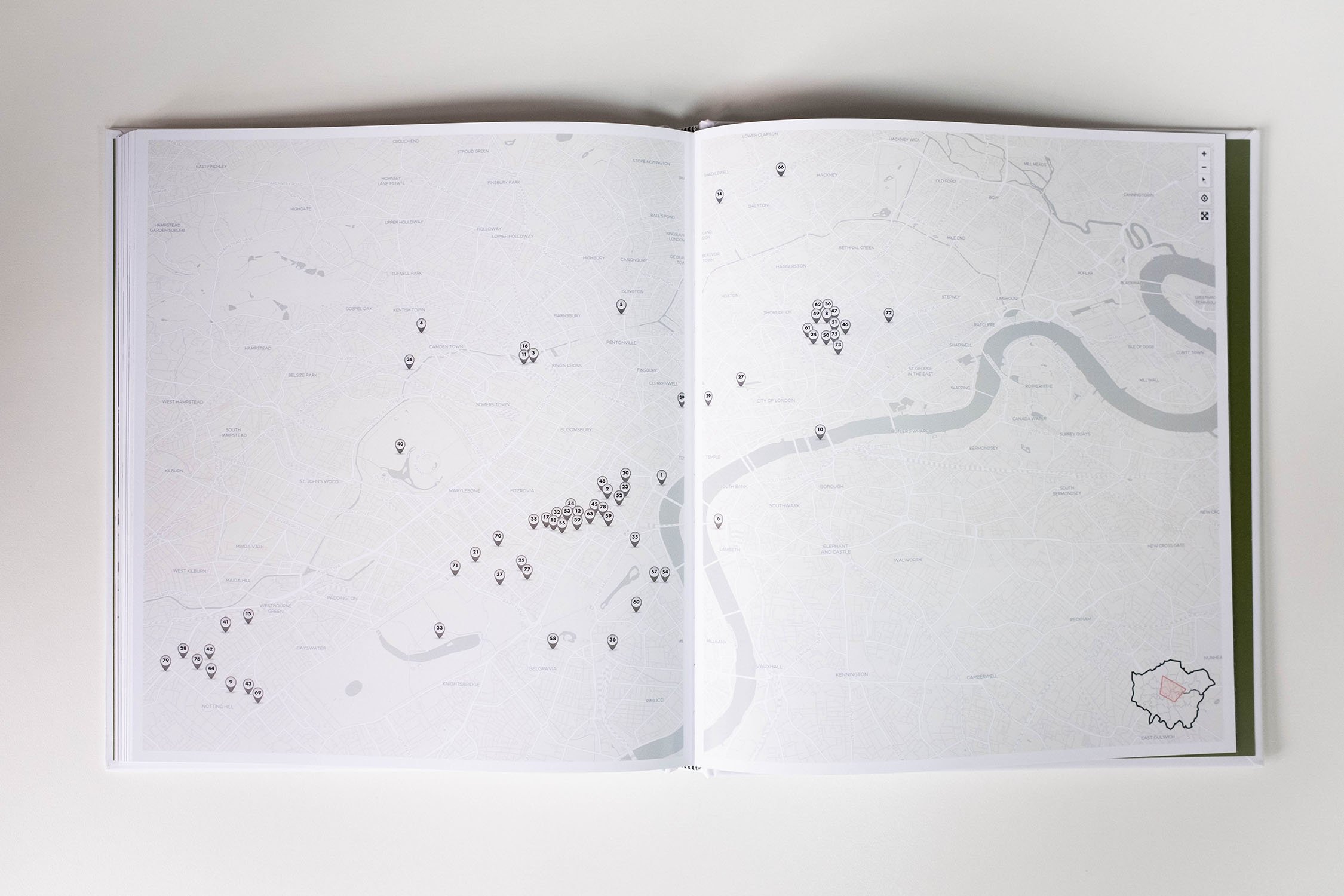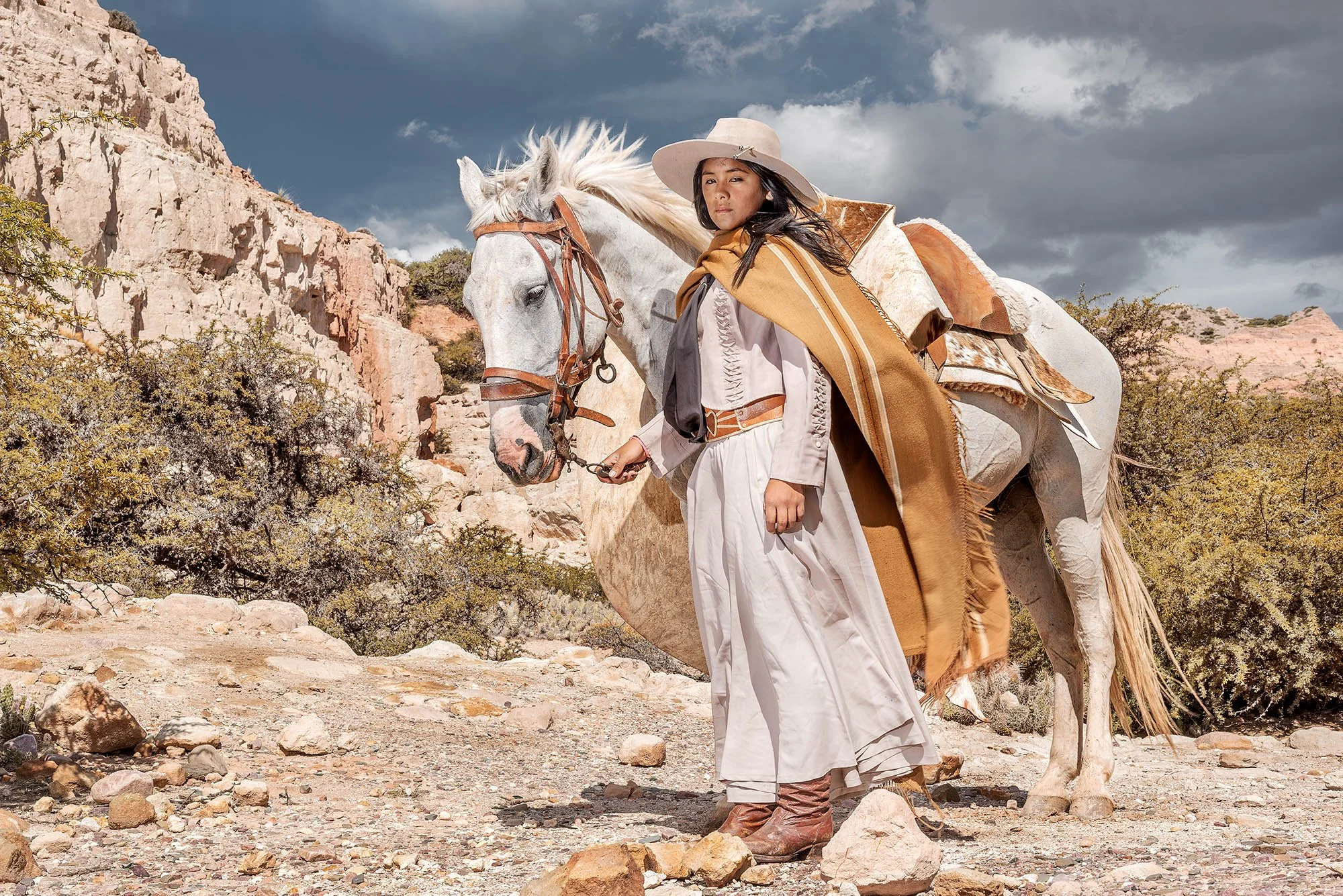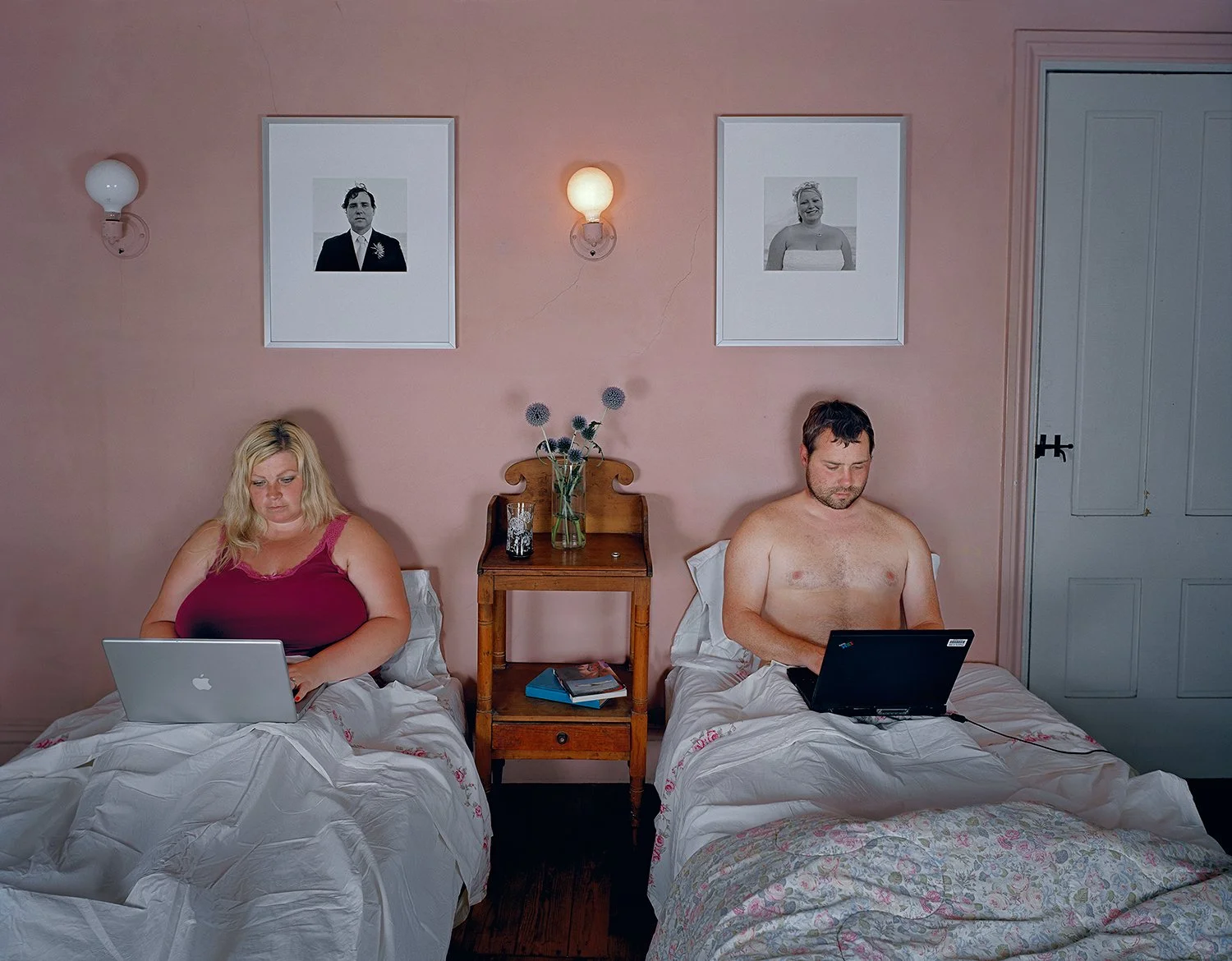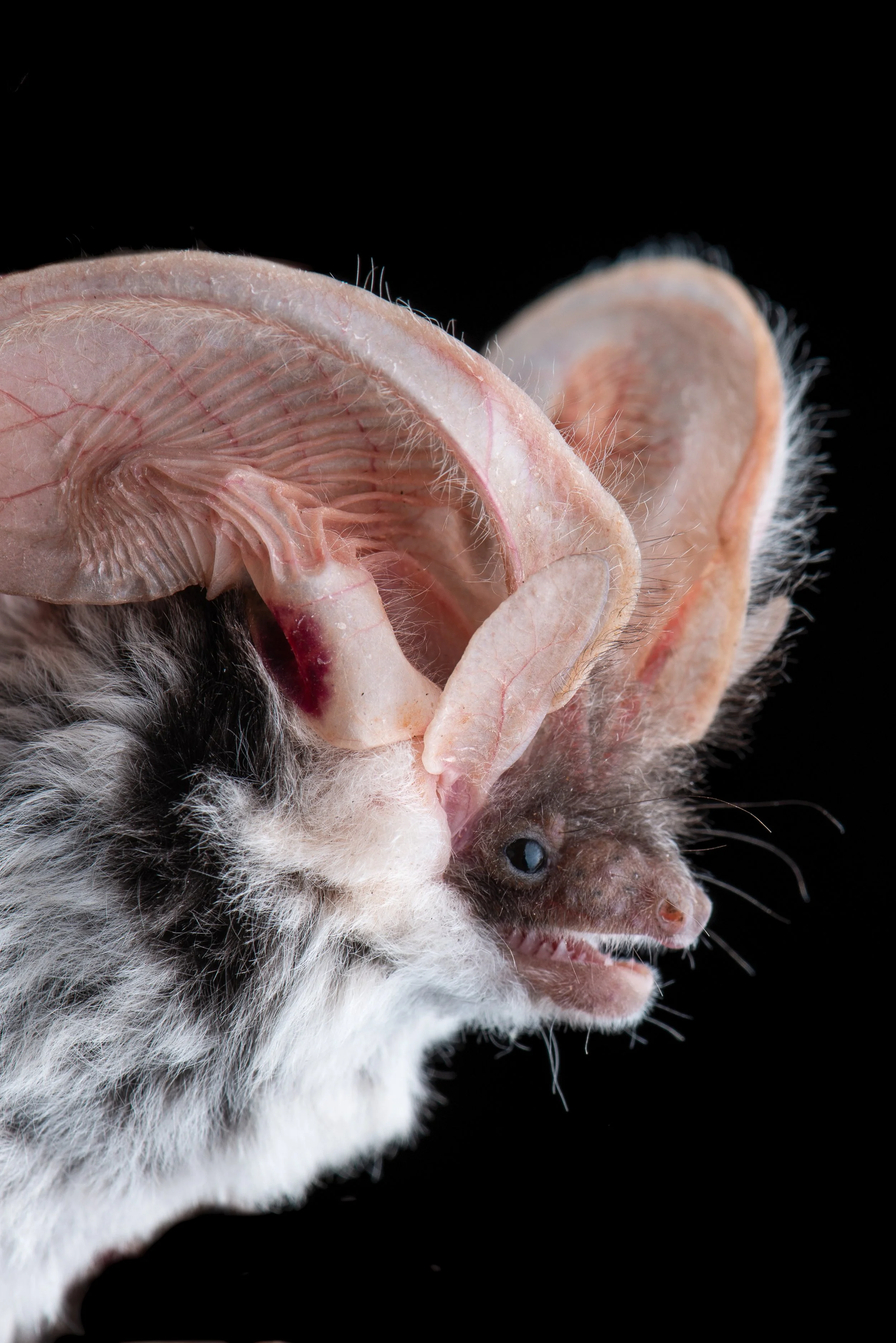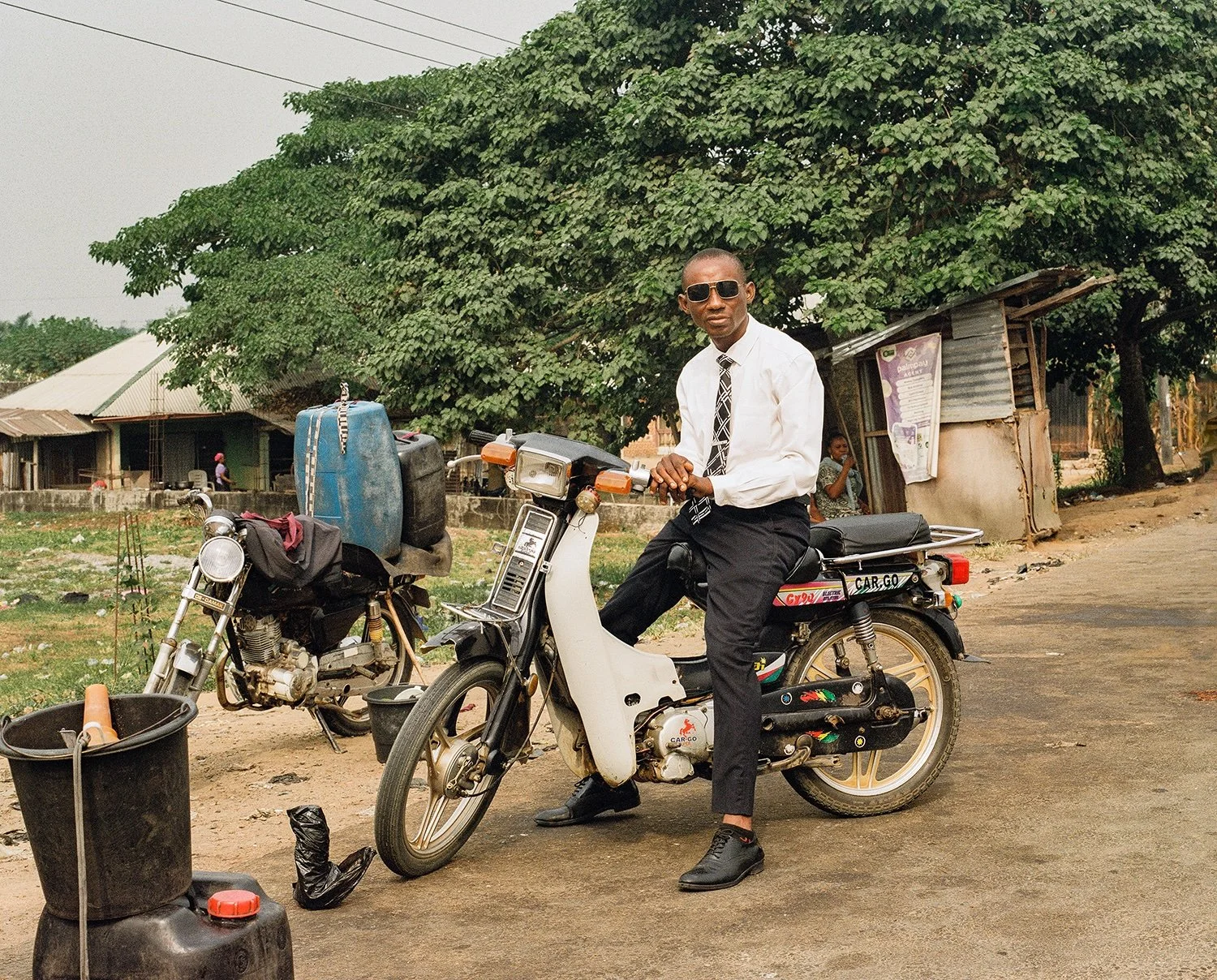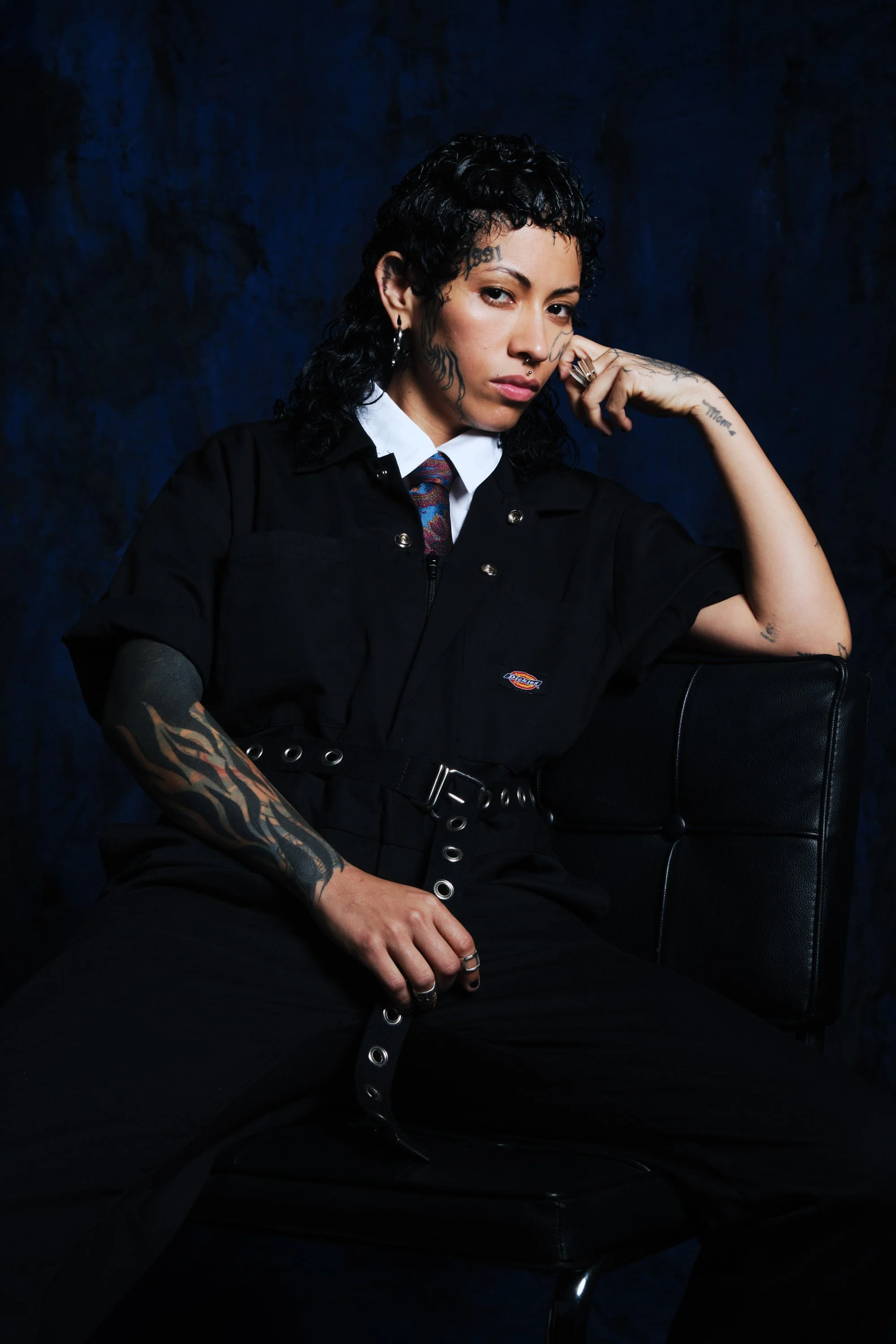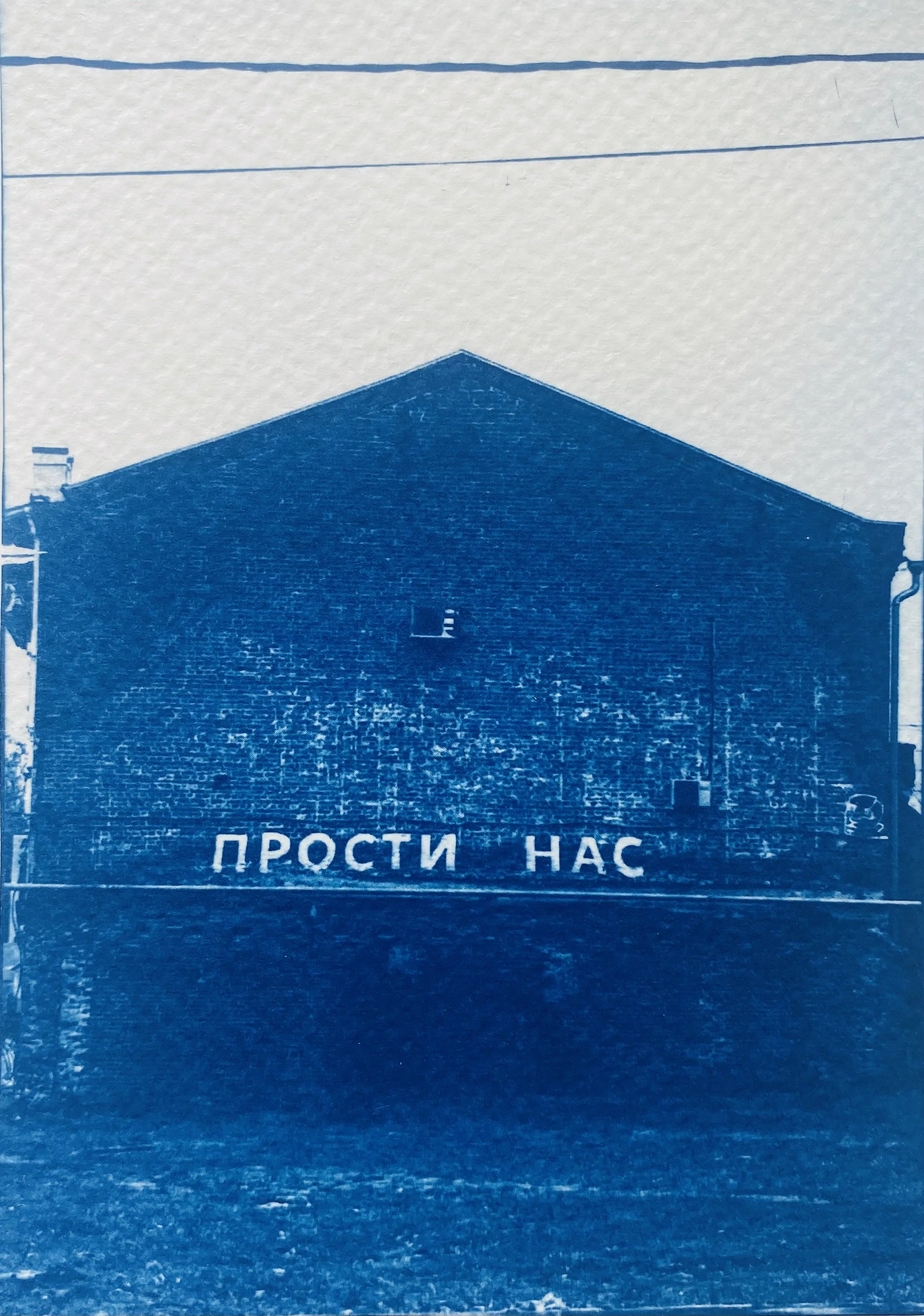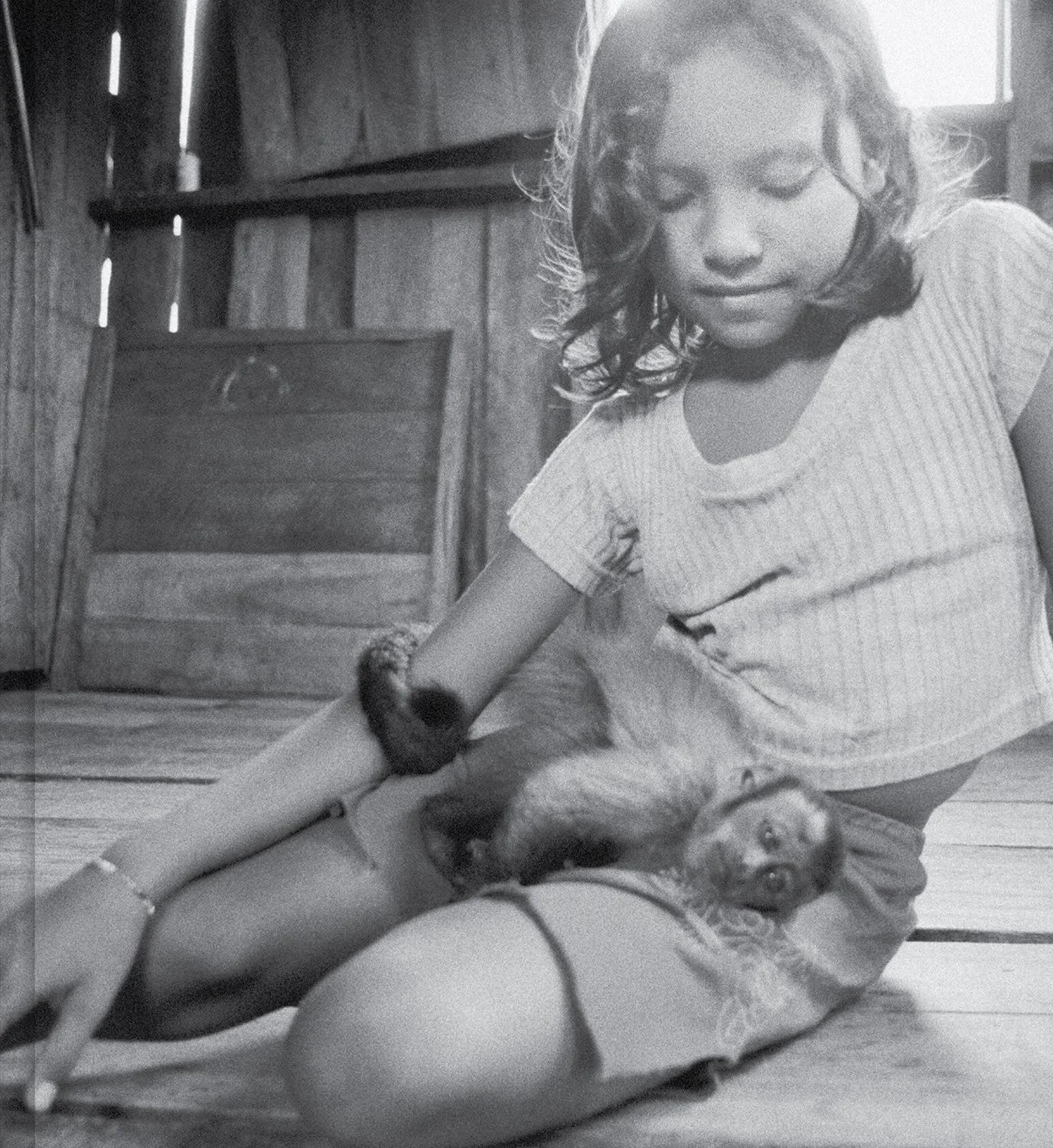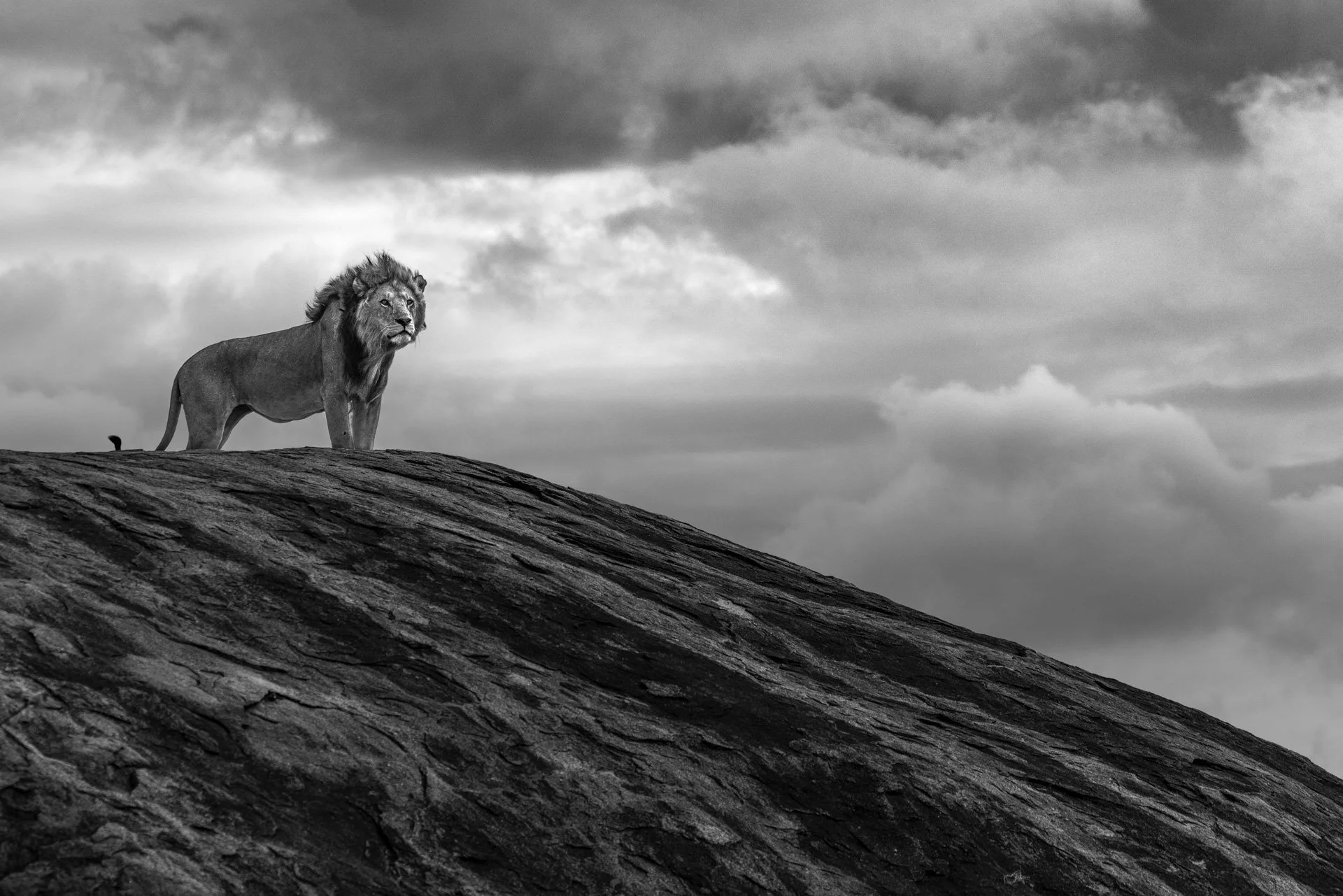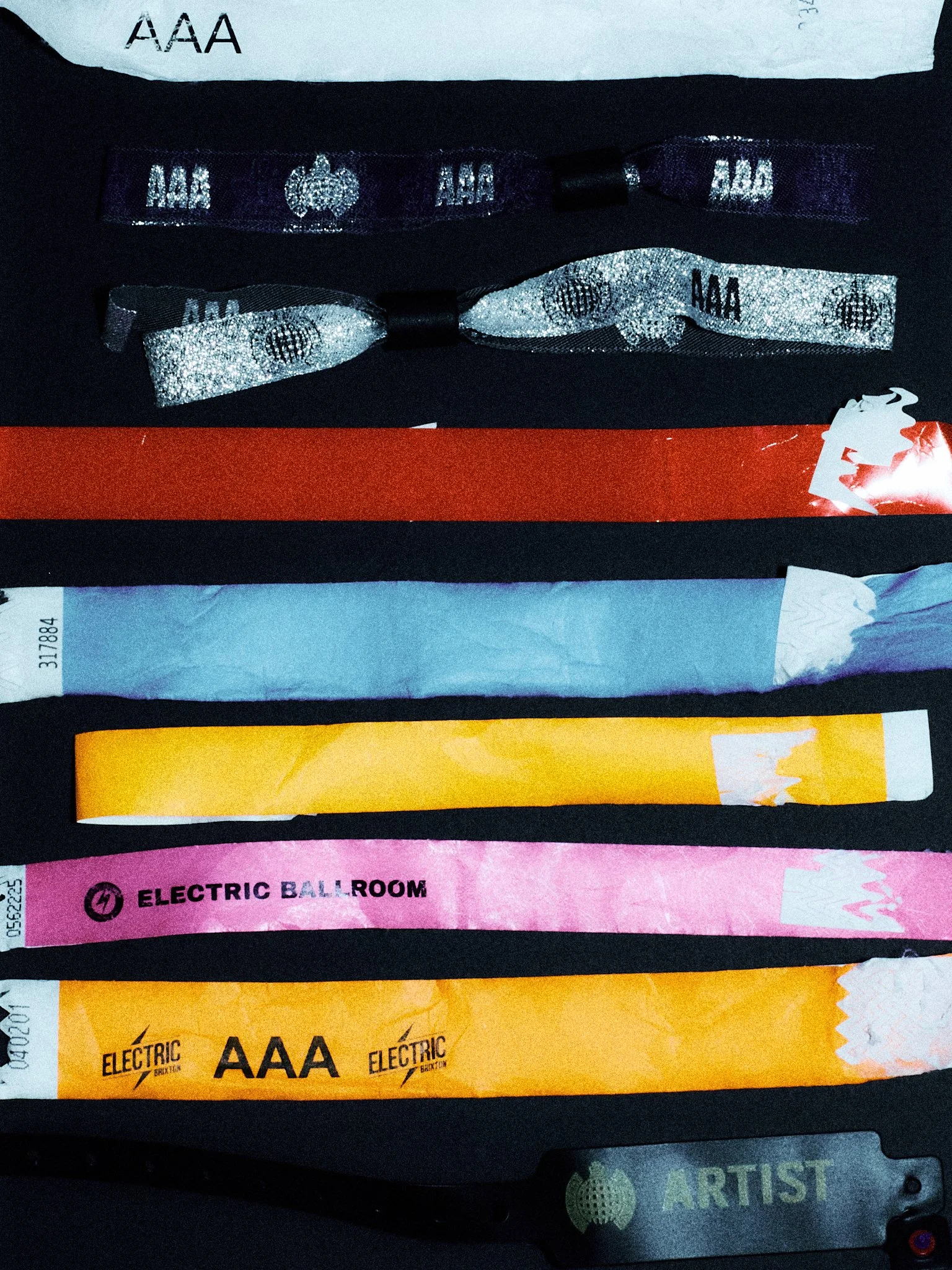London Street Chronicles
London-based street photographer Mister Geez recently published his first photobook London Street Chronicles Vol 1. We met with the charming native Martinican to talk about his approach to photography, what gear he uses and why he thinks ethics are important when shooting strangers.
Photography Mister GeezHello, thanks a lot for taking the time to chat to us today about your first photography book. I read that you are from Martinique but now based in London. Tell us a bit about you – how did you fall in love with photography?
I am Gerald Marie-Nelly, also known as Mister Geez, a visual artist originating from Martinique and based in London for the past 15 years.
Photography found its way into my life unexpectedly when my mother passed away 12 years ago. In the midst of preparing for her funeral, a series of autopsies on her body necessitated keeping the coffin closed during the wake. Determined to honour her memory, I embarked on a mission to find a photograph that would encapsulate her beauty and personality, to be displayed on the closed coffin, allowing people to show their respect. What I thought would be a brief search in the family albums and boxes turned into a six-hour journey, revealing to me the profound power of photography and transforming it into a conscious and meaningful pursuit. From that day forward, photography became my way of seizing light and capturing moments, guiding me from a dark place to a newfound appreciation for the beauty that surrounds us.
My path to discovering street photography was quite a journey, and it sort of fell into place due to circumstances. At first, I experimented with various photography styles, but the photo essays and documentaries by W. Eugene Smith and Sebastião Salgado really struck a chord with me. That's when I made up my mind to become a documentary photographer. In 2016, I took on my first photo documentary project in Haiti for a London-based charity.
Following that experience, life and perhaps a shortage of opportunities nudged me toward capturing the essence of my beloved London, my second home.
“I approach my photography with intention, meticulously planning my sessions. I select specific locations and allocate a few hours for shooting.”
How would you describe your process when you go out on the streets?
I approach my photography with intention, meticulously planning my sessions. I select specific locations and allocate a few hours for shooting. My mindset often aligns with that of a documentary photographer as I decide which part of the city to explore on a given day. While I occasionally enjoy shooting alongside other photographers, I find that I'm most productive and focused when working solo.
Once I arrive at the location, the initial hour involves immersing myself in the atmosphere and getting into the groove. I observe which streets are more bustling, how people are dressed, and the overall mood – you can feel happiness or stress in the air. I snap a few shots to activate my muscle memory and begin experimenting with angles for potential compositions.
On the technical side, I assess the lighting conditions, scrutinize the shadows cast by people and objects on the ground or walls, and identify appealing background areas. The objective is to be prepared to capture the perfect moment when it presents itself.
I'm constantly on the move; I can't stay in one place for more than five minutes. You might even find me going up and down a high street many times, changing sidewalks on each way.
While some street photographers patiently wait in one spot like fishermen, I'm more of a hunter. I keep moving, capturing scenes as they come into view. The main difference between a hunter and me is that, rather than using bullets to spread death, I use my camera to capture my love for humanity.
Do you set yourself a time limit? Any favourite locations (in London)?
Typically, a standard street photography session lasts about three to four hours, occurring once or twice a week. However, for special events such as protests or street festivals like the Notting Hill Carnival, I can easily extend my session to eight to twelve hours.
Certain places hold a special familiarity for me, like Shoreditch and Brick Lane in the East End. I used to volunteer weekly for two years at the Crisis Charity Sky Centre, where we offered art and photography classes to members experiencing homelessness to support their well-being. Soho is another familiar spot for me because I used to do an IT gig as a freelancer for Sony PlayStation in 2018 next to the photographer’s gallery, and after my day, I'd spend three hours shooting in the area.
Brixton in the South and Dalston in Hackney hold a special place in my heart since I once lived there, and they evoke memories of my Caribbean upbringing.
In the city centre, both Covent Garden and Oxford Street, as well as Portobello in West London, are foolproof choices.
I am based around Stratford on the East side now, which can be charming in a gritty way, I like to say that Newham offers good and bad days. I also make it a habit to explore unfamiliar areas to keep my creative juices flowing.
To be honest, I enjoy mixing it up. Familiar spots offer the comfort of knowing the vibe in advance, while venturing into unknown neighbourhoods is all about discovery and exploration.
“I use my camera to capture my love for humanity.”
Taking pictures of strangers in public can be a challenge. As Bruce Gilden said, “I have no ethics.” What would you consider ethical or unethical when it comes to street photography? Do you have to be ruthless to get the shot?
Bruce Gilden epitomises audacity or, simply put, not giving a f*ck (with a laugh). While I could probably pull off his style – jumping in people's faces with flash photography – I question whether I'd enjoy it and stick with it for over 20 years. Probably not.
I strongly believe in maintaining ethics when capturing street photos. I exercise caution when photographing women or children and generally avoid snapping shots of people facing hardship. However, if the image holds significant value, I'll capture any of the aforementioned subjects. I strive to be respectful, but sometimes, humorously borderline scenes may end up in my shots.
I'm attentive to reading energies and situations. As a 6ft6 tall black man often in hoodies when it's cold, I'm aware of potential stereotypes. To counter this, I avoid hiding my camera and maintain direct eye contact. A friendly smile, a wink, or a kind glance can make a big difference. I'm always ready to engage and interact, willing to explain what I'm up to as well.
I call my approach the ‘GG magic’, a playful twist on Juju magic, with GG standing for Gentle Giant. Once I share that ‘GG magic’ energy, everything usually goes smoothly!
What’s your current set-up. Is there a specific camera/lens you like to shoot on the streets with? Film or digital or both?
My current setup is the ‘Kiss’ one – Keep It Super Simple.
In London, my go-to digital camera is the Fujifilm X100V, which boasts a fixed lens equivalent to 35mm in full-frame size. I appreciate the Fuji cameras for their ergonomic design, with intuitive buttons for manual exposure adjustments, eliminating the need to navigate screens and menus.
For events like protests or festivals where flexibility is key, I opt for the Fujifilm X-T3 paired with a zoom lens, handy when navigating crowded spaces.
I also shoot film for specific projects due to cost considerations. In one of my long-term ongoing project in Martinique, I exclusively use a 35mm Canon A-1 and a medium-format Fujifilm GW690III.
“I appreciate the simplicity of black and white photography, which lets me concentrate on the essentials: light, shadows, and composition.”
All the images in your book are in black and white – is there a specific reason for that?
I appreciate the simplicity of black and white photography, which lets me concentrate on the essentials: light, shadows, and composition. In colour photos, a misplaced red Coca-Cola sign, for example, can be a nightmare.
Colours can often distract and I find monochrome much more comfortable.
The only time I truly embrace colour is when I'm shooting film, as the film stock dictates the colours with an analogue feel, making it more enjoyable than digital colour photography in my opinion.
For me, it's all about the timeless elegance of black and white prints. It simplifies my process by eliminating the need for colour grading and ensures consistency between the monitor and print. The constraints are similar to a vegan diet – less choices on the menu, and more focus to go straight to the point.
Plus, black and white photography in London is weather-proof. Grey skies are no longer a concern. Haha!
You must have compiled quite an archive of images over the years. How did you approach the editing process and how do you decide which image makes it into the book?
The body of work I've gathered since 2015 inspired me to embark on a series of books centred around London's streets. The initial book's editing process was monumental; it took considerable time to go through all the images and identify emerging patterns.
Initially, my street photography felt like freestyling, with no specific goal, making it challenging to create a book narrative. I usually hit the streets without a predefined agenda, capturing whatever catches my eye. Organising these seemingly random shots proved to be quite a challenge.
The solution, interestingly, emerged from the images themselves. After repeatedly reviewing them, I started noticing patterns and discovered my style. I observed numerous juxtapositions between foregrounds and backgrounds, along with many lighthearted scenes captured in a playful manner. This formed the foundation for the concept of connecting with one's inner child.
“I usually hit the streets without a predefined agenda, capturing whatever catches my eye. Organising these seemingly random shots proved to be quite a challenge.”
The way you placed images next to each other in the book added another dimension to your work. I thought that was very interesting. Was that important to you?
I initially attempted to create the book on my own, making eight attempts before recognising the need for assistance with narrative and design. However, I remained confident in the sequencing and how I wanted to order the images.
I came to understand that an exhibition and a book are very different mediums for presenting one's work. In an exhibition, viewers typically engage with photographs individually, whereas in a book, you can treat two images on a spread like a diptych, allowing me to play with the reader's experience by juxtaposing two images with similarities, contrasts, or opposites.
Of course, some particularly powerful images deserved their own dedicated spread.
Your book contains QR codes at the back and the reader can watch videos of how and where the images were created. This is a very unique feature. Why was this important to you to add?
The interactive elements at the end of the book are a personal touch of mine. Whenever I embark on a new project, I contemplate what extra value I can bring to it.
My simple approach was, "If I were to create a photobook, what would I hope to find within its pages?" That question led me to include features like an interactive map pinpointing the photo locations and videos showcasing the moments behind the images.
When I started, I wished to witness how the greats navigated bustling streets and how their minds worked to spot unique scenes. This curiosity drove me to document my own street photography process by attaching a GoPro to one of my backpack straps near my shoulder. I've shared point-of-view (POV) videos on YouTube, serving as a video archive linked to QR codes in the book for featured images.
While I don't always use the GoPro systematically, reviewing the videos offers valuable educational insights, even for me. I spot missed opportunities and areas for improvement. I maintain a critical eye on my work, constantly considering how I could approach situations more effectively.
You just published your first book – what’s next for you?
This book kicks off the London Street Chronicles series, and I'm currently hard at work on the second volume. I can't give you an exact release date, as being an indie self-publisher adds some unpredictability, but I’m on it.
I've also got some other projects in the works that venture into mixed media, but I'll save that story for another day!
London Street Chronicles Vol 1 is available here
About Mister Geez
Mister Geez is a visual artist hailing from Martinique and now based in London, UK.
With a passion for observation and a hunger for knowledge, he’s constantly pushing the boundaries of his creative expression through the use of photography and mixed media techniques.
To see more of his work, visit his website or follow him on Instagram
